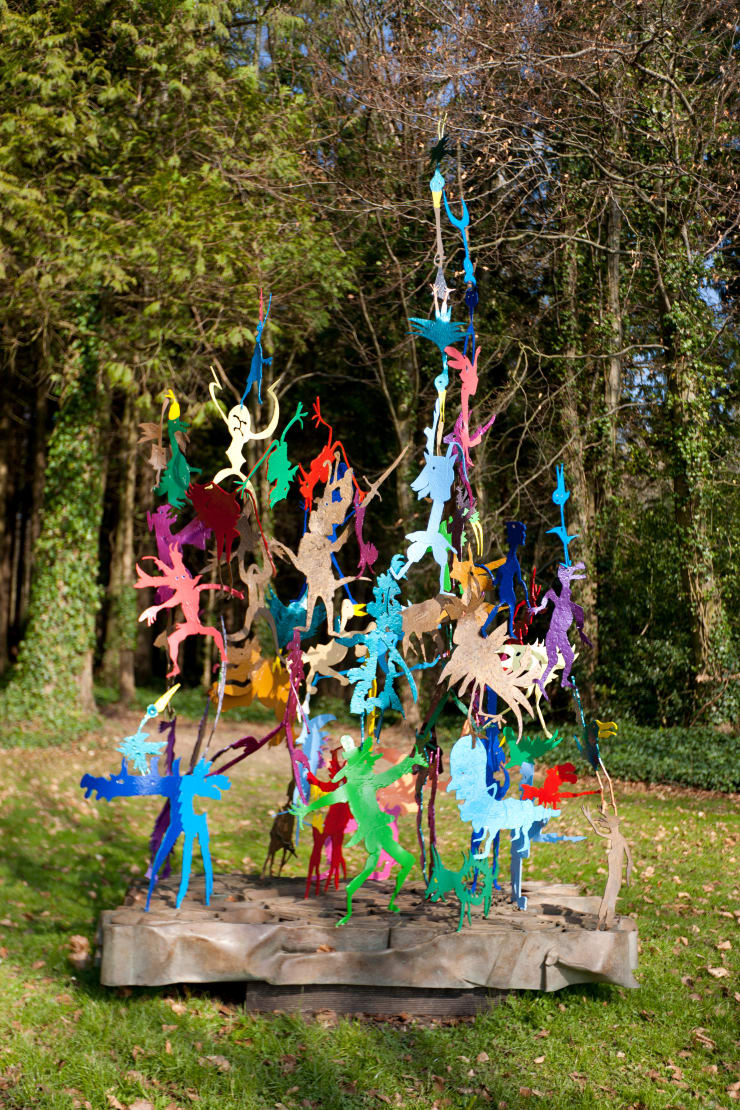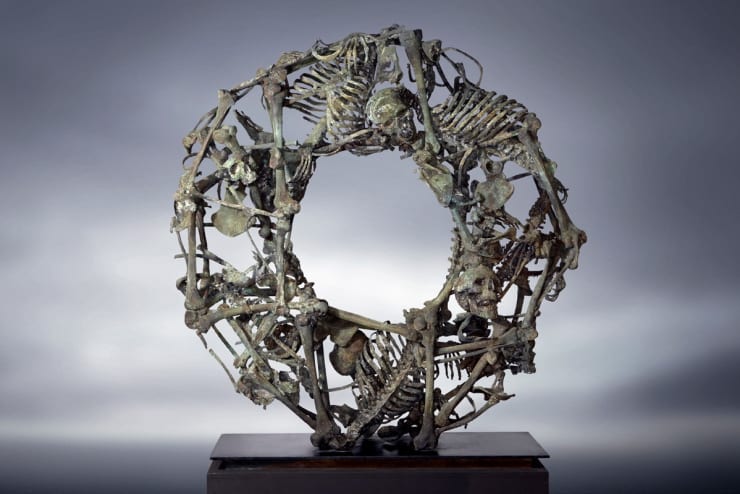-
What made you become a sculptor?
I’m dyslexic; however, as a consequence, from early childhood, I discovered great contentment in working with my hands - making, creating, and investigating how I could use all kinds of materials, often in unusual ways. This gave me the ability to communicate and in effect create my own visual language. It seemed a natural step to become involved in sculpting.
-
-
Can you tell us more about your 'daily challenges' to create work from a wide range of materials?
Each day in my studio involves problem solving and learning through application. My aim is to understand all kinds of materials; their possibilities and the different ways I can use them with some degree of eloquence in order to convey meaning through the sculpture I produce. From my point of view, a successful example of sculpture needs to pull the viewer around to see how the work resolves itself from all angles.
-
-
What is the significance of humour in your work?
Life would be very dull without humour. It is good to make people laugh. My mother was a great raconteur with a wicked sense of humour, so I think I learned early on that humour gives you a licence to touch on uncomfortable subjects in an acceptable way. So, I try to incorporate this in some of my work. For example, in the Laughing and Killing series of miniature sculptures I re-purposed discarded nitrous oxide canisters and spent bullet cases.
-
-
How would you say your practice has changed over the last 10 years?
I have learned patience and become better skilled at refining and editing my output and discarding work that does not “sing” for me. The idea that a piece of work “sings” or not was first suggested to me many years ago by Adrian Montford whom I was lucky to have as one of my tutors at St Martin’s School of Art (now Central Saint Martins College of Art and Design). We affectionately called him Monty. I’ve kept that phrase of his in mind ever since.
-
-
Observation of the natural world, human condition and biology seem to inform and inspire you. Would you agree?
Yes, I would agree. These are the main driving forces in my practice. I enjoy investigating a wide range of subjects requiring a variety of my skills, passions and interests through the use of different mediums in order to communicate through my sculpture.
Introducing: Steven Gregory
Current viewing_room












